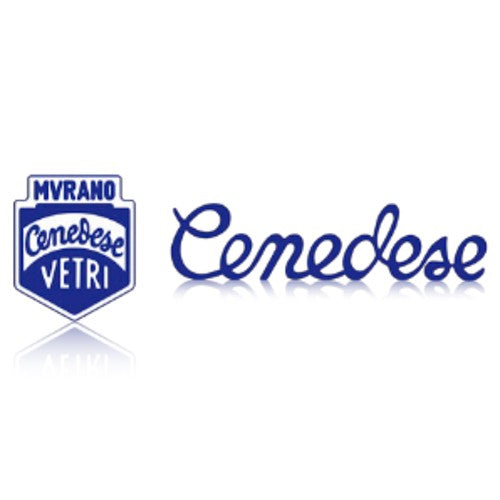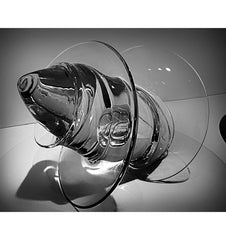

In 1949 Gino Cenedese remained the sole owner due to the departure of the members.
Under his guidance, the factory soon gained international fame for the value and exclusivity of its production, establishing itself as one of the most renowned of the island of Murano.
The atelier developed along two lines: on the one hand the ancient tradition of Murano artistic glass continued - blown glasses, vases, plates, risers and Venetian chandeliers -, on the other it welcomed the suggestions of contemporary art, under the pressure of continuous research of new techniques and effects made possible by the vitreous material.
From 1953 to 1958 there was a collaboration with the artist and sculptor Napoleone Martinuzzi who made female figures in solid glass, bas-relief decorative panels and large chandeliers under the Ars Cenedese brand.
From 1954 to 1962 it was the turn of the painter Luigi Scarpa Croce who conceived new forms in submerged glass.
Then from 1954 to 1962 the designer Fulvio Bianconi , whose creations were exhibited at the Biennale in 1954.
The collaboration with the master glassmaker Ermanno Nason dates back to the period between 1963 and 1972.
He had great creative freedom and conceived an extremely varied production of great artistic importance.
In the same period there was also the collaboration with the American artist Harold Stevenson, who made unique sculptures, inspired by the changing colors of the Venetian lagoon (1968-1969).
In 1958 a very young Antonio Da Ros began working at Cenedese, bringing a vital and enthusiastic approach to glass processing, experimenting with new color effects in sommerso glass.
At the 1960 Biennale he presented the ‘Contrappunti’, tones of submerged colors, which won him the prize for the glass art section.
Ars Cenedese Murano is now owned by the group Seguso Viro, is still active and keeps alive the techniques and the art of a tradition handed down from generation to generation, realizing extremely recognizable pieces destined to maintain value over time.




